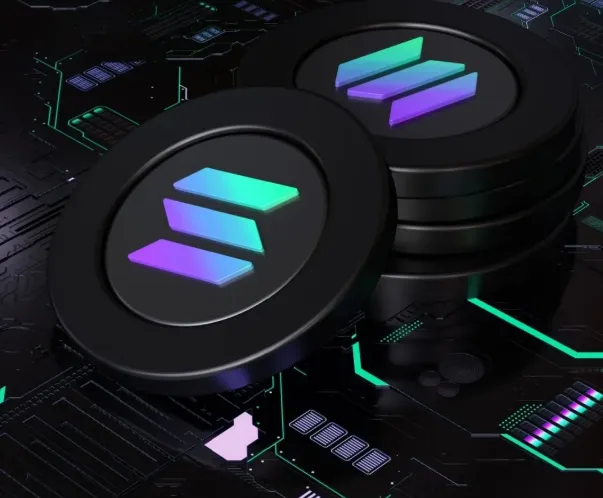As the world of cryptocurrency continues to evolve, the emergence of quantum computing presents both an exciting opportunity and a serious challenge. Quantum computers have the potential to break through many of the cryptographic systems that underpin the security of current digital currencies. In response, a new category of cryptocurrencies known as quantum-resistant tokens is gaining attention. But what are they, and why should crypto enthusiasts care?
What Are Quantum-Resistant Tokens?
Quantum-resistant tokens are cryptocurrencies that incorporate advanced cryptographic techniques designed to withstand attacks from quantum computers. Unlike traditional cryptos like Bitcoin, which rely on cryptographic problems that quantum computers could solve in an instant, these tokens use encryption methods that are believed to remain secure even in a quantum-enabled future. This includes methods like hash-based signatures and lattice-based cryptography—both of which provide a higher level of security against the potential threat posed by quantum computing.
The Threat Posed by Quantum Computing
Quantum computing harnesses the unique properties of quantum mechanics, such as superposition and entanglement, to process information at a rate far beyond that of classical computers. While this technology promises to revolutionize fields like materials science and medicine, it also threatens the foundations of digital security.
Current cryptographic systems—like those used in Bitcoin and Ethereum—rely on complex mathematical problems that are very difficult to solve with today’s classical computers. However, quantum computers could easily crack these problems, thanks to algorithms like Shor’s algorithm, which can factor large numbers and solve discrete logarithms much faster than traditional computing methods. This could render the cryptographic mechanisms securing cryptocurrencies vulnerable to attacks.
Examples of Quantum-Resistant Cryptocurrencies
Several projects are already integrating quantum-resistant technologies into their networks to protect against these future threats. Here are a few notable examples:
Quantum Resistant Ledger (QRL)
QRL employs the eXtended Merkle Signature Scheme (XMSS), which uses hash-based signatures to secure transactions. This method is based on the difficulty of reversing cryptographic hash functions, making it inherently resistant to quantum attacks. Each transaction is signed with a one-time key, which significantly reduces the risk of key reuse and makes it nearly impossible for quantum computers to forge signatures.
QANplatform
QANplatform uses lattice-based cryptography, particularly the Learning With Errors (LWE) problem, to secure its blockchain. Lattice cryptography is believed to be resistant to quantum attacks because solving problems within lattice structures is exponentially difficult, even for quantum computers. This makes QANplatform’s cryptographic system secure in the face of future quantum threats.
Mochimo
Mochimo uses the Winternitz One-Time Signature (WOTS+) scheme, another hash-based cryptographic method. The WOTS+ system ensures that every signature uses a unique key, making it difficult for quantum computers to forge signatures. This method offers a balance of security and efficiency for blockchain transactions.
IOTA (Historically)
IOTA initially explored quantum-resistant techniques using Winternitz one-time signatures, but its focus has since shifted. Recent updates, such as IOTA 1.5 (Chrysalis), have moved away from quantum resistance, highlighting the evolving nature of cryptographic strategies in the crypto space. However, the shift underscores the importance of quantum-resistance and the ongoing need to adapt to new threats.
Why Quantum-Resistant Tokens Matter
Quantum-resistant tokens aren’t just a technical innovation—they are crucial for the future security of blockchain networks. Here’s why:
1. Protecting Crypto Assets
Tokens like QRL and QANplatform use cryptographic methods that are resistant to quantum attacks, safeguarding users’ private keys against potential decryption by quantum computers. This ensures that assets remain secure as quantum computing technology advances.
2. Preserving Blockchain Integrity
Quantum-resistant algorithms ensure that blockchain records remain immutable. For example, with the XMSS scheme, every transaction is signed with a one-time key that cannot be forged, even by attackers with quantum capabilities.
3. Future-Proofing the Ecosystem
By adopting quantum-resistant techniques today, blockchain networks can better adapt to the quantum era. Hybrid systems, which combine traditional cryptographic methods with post-quantum algorithms, provide a safeguard against potential quantum threats while maintaining operational stability.
4. Building Regulatory Confidence
As regulatory bodies focus more on cybersecurity, the integration of quantum-resistant technologies can build trust among institutional investors and demonstrate a commitment to securing digital assets against future risks.
Challenges in Implementing Quantum-Resistant Cryptocurrencies
While quantum-resistant tokens offer vital security, there are several challenges to consider:
1. Performance and Efficiency
Quantum-resistant cryptographic methods often come with higher computational demands. For instance, lattice-based systems require operations on large matrices, which can impact scalability and transaction speeds. Developers need to balance these complexities with the need for efficient blockchain operations.
2. Integration with Existing Systems
Upgrading current blockchain infrastructure to support quantum-resistant methods could require significant changes. This may involve hard forks or other protocol updates that necessitate consensus within the community. Implementing post-quantum cryptography on existing networks is a complex process that requires careful planning and coordination.
3. Standardization and Hybrid Solutions
As organizations like NIST work to standardize post-quantum cryptographic algorithms, many projects are turning to hybrid solutions. These systems combine traditional cryptographic methods with quantum-resistant algorithms to provide a flexible, robust defense against both current and future threats.
Looking Ahead
Quantum-resistant tokens are a vital part of the cryptocurrency ecosystem’s ongoing evolution. By adopting cryptographic methods that can withstand quantum computing attacks, projects like QRL, Mochimo, and QANplatform are preparing the crypto space for a quantum-enabled future. These innovations not only protect digital assets but also ensure the integrity of blockchain networks, making them more resilient in the face of emerging threats.
The transition to a fully quantum-resistant crypto world is still in progress, but by embracing these advancements today, the industry is taking proactive steps to safeguard its future. The rise of quantum-resistant tokens is an essential part of ensuring the long-term security of digital assets, even in a world dominated by quantum computing.







